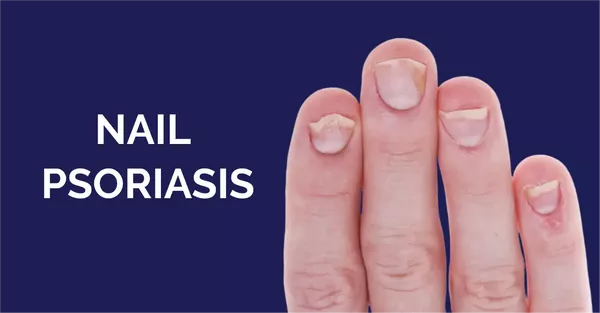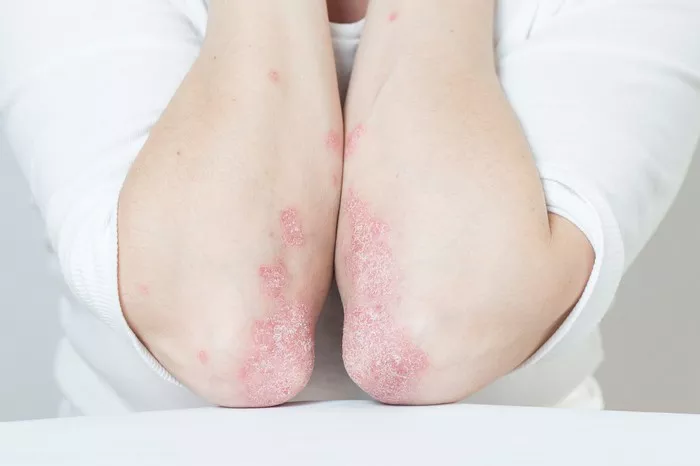Nail psoriasis, a condition affecting the nails and often associated with psoriasis of the skin, is not merely a cosmetic concern. It has profound implications for the individual’s health, particularly as it relates to the immune system. This article delves into the nature of nail psoriasis, exploring whether it is classified as an autoimmune disease, and examines the pathophysiology, symptoms, diagnosis, and treatment options, while providing an understanding of its impact on patients’ lives.
The Basics of Psoriasis
Psoriasis is a chronic inflammatory skin disorder characterized by the rapid proliferation of skin cells leading to scaling and erythematous plaques. It affects approximately 2-3% of the global population. The condition is multifactorial, involving a combination of genetic predisposition and environmental triggers. Psoriasis manifests in several forms, including plaque, guttate, inverse, pustular, and erythrodermic psoriasis.
Nail Psoriasis: An Overview
Nail psoriasis specifically affects the fingernails and toenails, leading to a variety of symptoms such as pitting, discoloration, thickening, and detachment of the nail from the nail bed (onycholysis). It is estimated that 80-90% of individuals with psoriasis will experience nail changes at some point in their lives, and nail involvement can occur in isolation or in conjunction with skin symptoms.
SEE ALSO: The 5 Best Urea Creams for Psoriasis
Pathophysiology of Nail Psoriasis
To understand whether nail psoriasis is an autoimmune disease, it is essential to comprehend the underlying mechanisms driving the condition. Psoriasis is fundamentally an immune-mediated disease. The pathogenesis involves an interplay between the immune system and skin cells, where T cells, a type of white blood cell, play a crucial role.
In psoriasis, an abnormal immune response triggers the activation of T cells in the skin. These cells release pro-inflammatory cytokines such as tumor necrosis factor-alpha (TNF-α), interleukin-17 (IL-17), and interleukin-23 (IL-23). These cytokines promote inflammation and accelerate the growth cycle of skin cells, leading to the thick, scaly patches characteristic of the disease.
Nail psoriasis follows a similar inflammatory pathway. The nails are composed of keratinocytes, the same type of cells found in the outer layer of the skin. In nail psoriasis, the inflammatory process affects the nail matrix (the tissue under the nail that produces the cells that make up the nail), leading to the various clinical signs observed.
Autoimmune Disease: A Brief Explanation
Autoimmune diseases occur when the immune system mistakenly attacks the body’s own tissues. This aberrant immune response results in inflammation and damage to various organs and tissues. Examples of autoimmune diseases include rheumatoid arthritis, lupus, multiple sclerosis, and type 1 diabetes.
The hallmark of autoimmune diseases is the presence of autoantibodies or self-reactive T cells that target specific components of the body. These diseases can affect virtually any part of the body and often involve chronic inflammation and tissue damage.
Nail Psoriasis as an Autoimmune Disease
Given the immune-mediated nature of psoriasis, it is classified as an autoimmune disease. Nail psoriasis, as a manifestation of psoriasis, shares this classification. The involvement of the immune system, particularly the dysregulation of T cells and the production of pro-inflammatory cytokines, aligns nail psoriasis with other autoimmune conditions.
Research has shown that the same immune pathways involved in skin psoriasis are active in nail psoriasis. The overproduction of cytokines such as TNF-α, IL-17, and IL-23 leads to the inflammation and abnormal keratinocyte proliferation seen in affected nails. This immune dysregulation is central to the development and progression of nail psoriasis, confirming its status as an autoimmune disease.
Clinical Features of Nail Psoriasis
The clinical manifestations of nail psoriasis are varied and can significantly impact the quality of life. Common signs and symptoms include:
- Pitting: Small depressions on the nail surface due to defective nail formation in the nail matrix.
- Discoloration: The nails may turn white, yellow, or brown.
- Onycholysis: The nail separates from the nail bed, often starting at the tip and progressing inward.
- Subungual Hyperkeratosis: Thickening of the skin under the nail, leading to a buildup of a chalky substance.
- Crumbing: The nail becomes brittle and crumbles easily.
- Beau’s Lines: Horizontal lines or grooves across the nail.
These changes can be distressing for patients, leading to functional impairment and self-esteem issues.
SEE ALSO: The 6 Best Scalp Exfoliators for Psoriasis
Diagnosis of Nail Psoriasis
Diagnosing nail psoriasis can be challenging, especially when it occurs without skin involvement. Dermatologists use a combination of clinical evaluation, patient history, and sometimes, nail biopsy to confirm the diagnosis.
A thorough physical examination is essential, focusing on the characteristic nail changes described above. The presence of skin psoriasis elsewhere on the body supports the diagnosis. In ambiguous cases, a nail biopsy may be performed, which involves taking a small sample of nail tissue for microscopic examination. This can help differentiate nail psoriasis from other conditions like fungal infections, which can present with similar symptoms.
Treatment Options for Nail Psoriasis
Treatment of nail psoriasis aims to reduce symptoms, improve nail appearance, and address any associated pain or functional impairment. Management strategies include topical treatments, systemic therapies, and biologics.
1. Topical Treatments
- Corticosteroids: Topical corticosteroids are commonly used to reduce inflammation. They can be applied directly to the affected nails or the skin around the nails.
- Calcipotriol: This vitamin D analogue helps to regulate cell growth and reduce inflammation.
- Tazarotene: A topical retinoid that can improve nail psoriasis symptoms by normalizing skin cell growth.
2. Systemic Therapies
For moderate to severe nail psoriasis, systemic treatments may be necessary. These include:
- Methotrexate: An immunosuppressant that helps reduce the activity of the immune system.
- Cyclosporine: Another immunosuppressive drug that can be effective for severe cases.
- Acitretin: An oral retinoid that can help manage both skin and nail psoriasis.
3. Biologics
Biologic therapies have revolutionized the treatment of psoriasis, including nail psoriasis. These medications target specific components of the immune system involved in the disease process. Common biologics used for nail psoriasis include:
- TNF-α Inhibitors: Such as etanercept, infliximab, and adalimumab.
- IL-17 Inhibitors: Such as secukinumab and ixekizumab.
- IL-23 Inhibitors: Such as ustekinumab and guselkumab.
These therapies have shown significant efficacy in reducing nail psoriasis symptoms and improving nail health.
The Impact of Nail Psoriasis on Quality of Life
Nail psoriasis can have a profound impact on a patient’s quality of life. The visible nature of the disease can lead to embarrassment, social stigma, and a negative self-image. Functional impairments, such as difficulty with fine motor tasks, can affect daily activities and occupational performance.
The psychological burden of nail psoriasis is also considerable. Studies have shown that patients with nail psoriasis are more likely to experience anxiety and depression. The chronic nature of the disease, along with its impact on appearance and function, can lead to persistent psychological distress.
Conclusion
Nail psoriasis is undoubtedly an autoimmune disease, driven by the same immune mechanisms that underlie psoriasis of the skin. The involvement of T cells and pro-inflammatory cytokines in the pathogenesis of nail psoriasis confirms its classification within the spectrum of autoimmune diseases.
Effective management of nail psoriasis requires a comprehensive approach, addressing both the physical symptoms and the psychological impact. Advances in treatment, particularly with the advent of biologic therapies, offer hope for improved outcomes and quality of life for individuals affected by this challenging condition.
Understanding nail psoriasis as an autoimmune disease not only helps in recognizing the complexity of the condition but also underscores the importance of targeted therapies that address the underlying immune dysregulation. As research continues to evolve, new insights and treatments will likely further enhance our ability to manage this debilitating condition effectively.
Related Topics:























